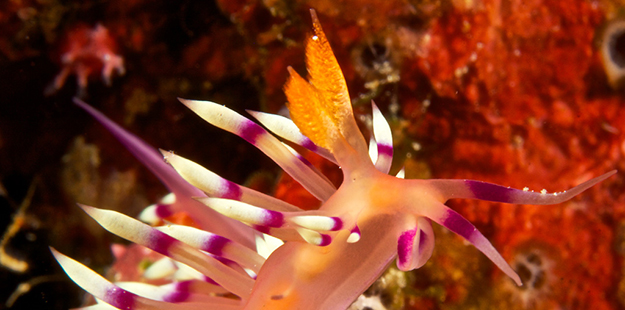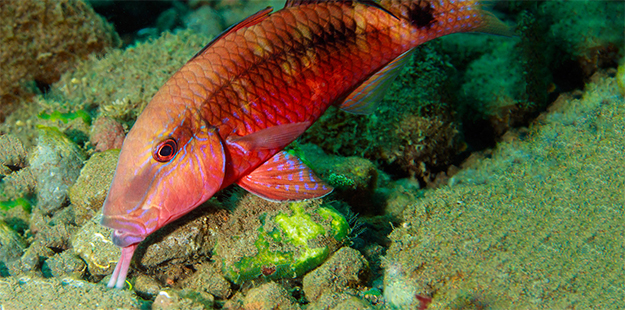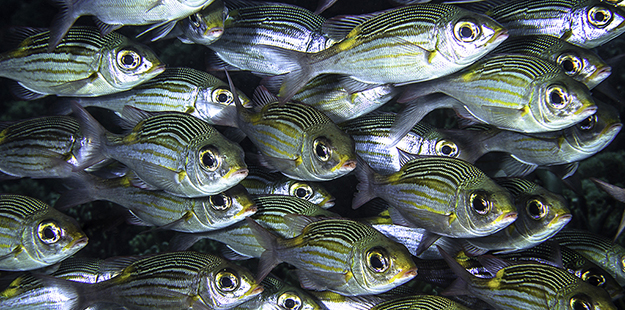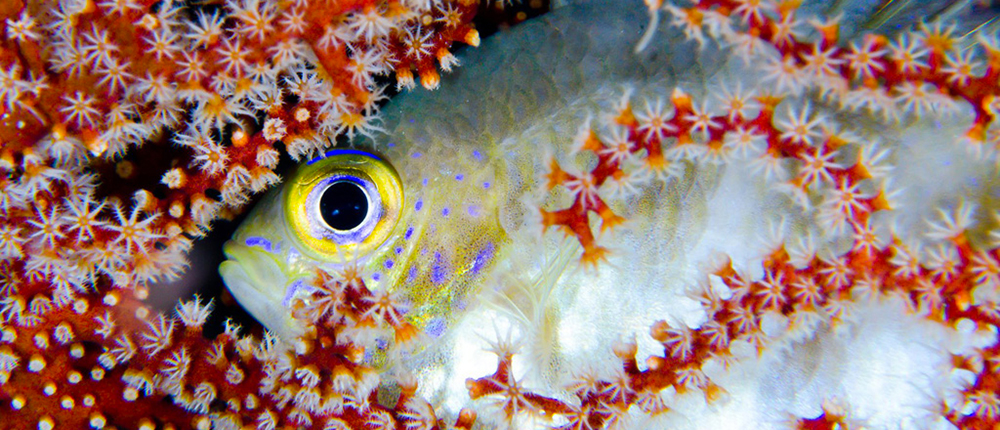Uncommon Senses

The nudibranch’s unique sensory systems guide them to food, away from predators, or eventually to a mate. Photo by Steve Miler
Many nudibranchs are prized for their vivid coloration. Unfortunately, they aren’t able to admire their own decorations, as the posses only the most rudimentary of eyes. Many are capable only of detecting the difference between darkness and light. Nudibranchs know the world mainly through smell. Their primary sensory organs are the twin antenna-like appendages called rhinophores, which are tuned to detecting chemical scent in extremely small quantities. The hair-like structures on the rhinophores increase the organ’s surface area for better reception, and the entire appendage can be retracted when the animal is threatened. These unique sensory systems guide the nudibranch to food, away from a predator, or eventually to a mate.
Taste
Most fish have taste buds on their lips, tongue, and all over their mouths. The abundance and sensitivity of the tasting cells placed around the mouth means they can taste their food simply by touching it with their lips. Instead of tongues, goatfishes have barbels, which are whisker-like structures covered in taste buds.

Goatfish use their barbels to search in the sand for invertebrates and worms to eat. Photo by Paula Butler
In areas of sand bottom around Wakatobi, goatfish can often be seen digging through the sand with their barbels extended, searching for invertebrates and worms. This behavior allows them to taste their meal before it even reaches their mouth.
Hearing
Although fish do not have external ears that are obviously visible, their hearing is very well developed and they can detect even faint underwater sounds with great clarity. Many fishes make and communicate using sound. It is also thought that a fish’s swimming bladder can also act as a sound detector, vibrating and passing sounds to the inner ear.

The fish’s lateral line receives signals stimulated in a front-to-back sequence, which gives the fish the ability to “feel” other fish around it. Photo by Wayne MacWilliams
Fish posses another sense, which is like a cross between hearing and touch. The organ responsible for this is the lateral line, a hair cell-based sensory system that detects water motion and vibration using organs known as neuromasts. The fish’s lateral line receives signals stimulated in a front-to-back sequence, which gives the fish much more than simple auditory information, including the ability to “feel” the other fish around it for social schooling, avoiding obstacles, and detect predator and prey.
Divers can only imagine the many different ways that the marine life of Wakatobi tastes, smells, sees, touches and hears the underwater world. But even when seen through our human eyes and experienced by our own senses, it is a very magical place. More about Wakatobi’s marine life > here.
To experience all the sights, sounds, and sensory treasures that Wakatobi has to offer, contact us at office@wakatobi.com or complete a quick trip inquiry at wakatobi.com.
Visit us on Facebook.


